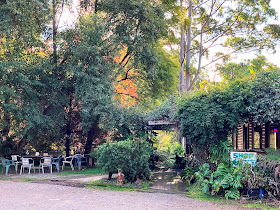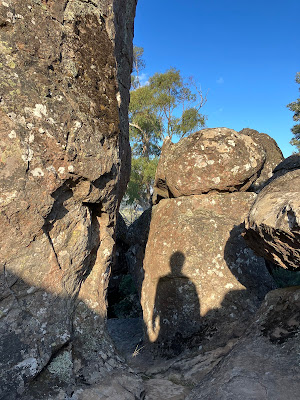I strive every day to remove from my soul all sentimentalistic attitude in the face of what those who suffer and work the most ask of me. I don’t want to be ashamed of myself in front of them. I go to my job to perform my duty and to serve justice. No lyricism or chatter, no comedy, no poses or romances. Not even when I come in contact with the most needy can anyone say I play the charitable lady who abandons her welfare for a moment to figure out that she performs a work of mercy.
– Eva Perón
Last Tuesday (May 7) was the 125th birthday of the late Eva Perón (1919-1952).
Popularly known as Evita, Eva Perón was an Argentine actress, politician, and social justice activist who, as the spouse of President Juan Perón (1895-1974), served as First Lady of Argentina from June 1946 until her death on July 26, 1952.
I first became aware of Eva Perón’s life and story when as a young teenager I found myself intrigued by images and newsreel footage of her in the music video for “Don’t Cry for Me Argentina” by Julie Covington. The song, from the 1976 concept album (and soon-to-be musical) Evita, was written by Andrew Lloyd Webber and Tim Rice. It was a No. 1 hit in the UK in February 1977 and then later that year in countries around the world, including Belgium, Ireland, New Zealand, the Netherlands, and Australia.
Sorcha O’Higgins writes that “the song book-ended the original [concept album and] theatre performance and was sung at both the beginning and the end to evoke the generosity of Evita’s spirit in death by asking the public not to mourn her. Upon its release in 1976, the song went to number one in the UK, and went on to win . . . an Ivor Novello award for Best Song Musically and Lyrically. . . . [It] is one of the most memorable parts of [Evita], if not one of the things that people from abroad associate most with Argentina.”
I was intrigued enough as a teenager by Eva Perón to choose her as the subject of a 5-minute “talk” I had to give for one of my Year 8 classes, probably either English or General Studies, I can’t remember for sure.
What I do clearly remember is how when I went to the front of the room and announced the subject of my talk, derisive howls of "Who?" were directed my way by a number of my classmates. Our teacher, however, was having none of that. Mr. Hammond was his name, and he silenced the room by roaringly ordering my detractors to shut-up so that they might actually learn something.
I don’t think anyone had ever stood up for me and the different-kind-of-things I was interested in before. It was an unforgettable moment for sure, and one that I’m sure helped build my self-confidence, even if at the time I wasn’t consciously aware of it. So thanks, Mr. Hammond!
Anyway, to (belatedly) mark the 125th anniversary of the birth of María Eva Duarte de Perón, aka Evita, I share today not only the great quote from the woman herself that opens this post but also the song about her that first sparked my interest in her life and an excerpt from María Teresa Hernández’s article, “A Prayer for Evita,” published earlier this year.
Writes María Teresa Hernández . . .
Early every morning, just as she reaches her workplace at a labor union in Buenos Aires, Ángeles Celerier heads to the chapel and prays to Saint Cajetan, Saint Teresa and Eva Perón.
Perón – unlike the others – has not been canonized by the Vatican, but this doesn’t matter to Celerier.
“For me, she is the saint of the people,” the 56-year-old Argentine said.
Many union members think of Evita as their patron or gaze at her photos with nostalgia, feeling that she and her husband, three-time President Juan Domingo Perón, brought prosperity to their country through an equality and social justice-driven movement that was named after him in the 1940s: Peronism.
That movement is currently the biggest opposition force in Argentina. And some political observers attribute the recent vote to elect President Javier Milei as a means to defeat Peronism and its previous hold on the presidency.
“For us, she is the spiritual reservoir of the people,” said Julio Piumato, human rights director at the largest union in Argentina. He signed a 2019 document requesting Evita’s beatification.
“No other figure has a deeper significance,” Piumato said. “The humble sectors are synthesized in Evita.”
According to the union leader, between 1946 and 1952, when Evita died of cancer at age 33 and Perón concluded his first term, the couple dignified the working class and prioritized social justice.
“Saints show us paths to reach Christ and intercede before God for us,” reads the beatification request delivered to the archbishop. “In our homeland, one generation after another continues to be converted by the humanist and Christian message of the standard bearer of the humble.”
Aside from a 1996 movie starring Madonna or Andrew Lloyd Weber’s 1978 musical, many foreigners know relatively little about this former first lady who died 71 years ago.
But in Argentina, Evita is a constant presence. Her face is printed on 100-peso bills, decorates a mural on a key government building, and greets guests from an altar placed in a restaurant called Saint Evita.
The secret behind the fascination that she awakens might be hidden in her name.
Long before becoming first lady, she called herself María Eva, a girl who left the town of Los Toldos to try her luck as an actress in Buenos Aires. As a modest film star she was known as Eva Duarte and afterwards became Eva Perón, the president’s wife. Then came Evita.
“Evita is the one who is close to the people,” said Santiago Regolo, a researcher at Museum Evita. “People began to call her that, and that construction is linked to the political and social work that distinguished her from the women who preceded her and take her as an example to this day.”
Evita was the one who paid visits to elders and single mothers. The one who handed out toys for children and bread for families. The one who promoted paid vacations for workers who had never been able to afford a break and gave a final push to achieve the women’s right to vote in 1947.
She has also inspired some feminists – who carry her photo along with their green scarves during protests – as well as a political organization that asks for social transformation using her image as a logo.
“Having Evita on our flag represents being with those in the lower classes and trying to vindicate her name over time,” said Iván Tchorek, from the Evita Movement, which has 155,000 members nationwide and was created after an economic crisis in 2001.
She’s relevant as ever, Tchorek said, because Peronism is. Thousands of workers like him recently led a general strike against the right-wing Milei, who defeated Peronist candidate Sergio Massa last November. Soon after, Milei issued a decree that would revoke or modify hundreds of existing laws in order to limit the power of unions and deregulate an economy that has traditionally featured heavy state intervention.
Even as a union standard-bearer in polarized times, Evita and her memory have the ability to transcend politics. “Certain issues are linked to matters of a sentimental, sacralized nature,” Regolo said. “She is seen as a companion, a sister, a mother for the humble.”
At her home in an impoverished neighborhood outside Buenos Aires, 71-year-old Rita Cantero says she almost met Evita. When her mother asked the first lady for help, she was pregnant with her.
“My mother used to say that Evita was very supportive, that people really liked her for the service she provided.”
Aware of the challenges of being a single mother, Rafaela Escobar attended a public event held by Evita in a plaza near her home. After being able to approach her and confide in her distress, Evita hugged her and said: “Don’t worry, I will help.”
Three weeks later, Escobar received a cradle and clothes for her unborn child.
Cantero says her mother never met Evita again, but she sent her letters and the first lady replied with envelopes carrying money.
“For us she is like a saint,” Cantero said. “Many judged her because she was a woman, but she was an honest, hard-working girl. She fought for our nation and was the force of Perón.”
Perón died two decades after Evita, in 1974, but his name continues to spark both admiration and hatred, yearning and blame.
His critics – among them legislator Fernando Iglesias, who has published several books contending Peronism ruined the country – claim that Perón was an authoritarian leader and his movement’s social assistance disguised corruption and patronage while generating too much dependence on the government.
Critics address Eva too. Her foundation pressed donors for resources, some say. She was careerist and a hypocrite, others assert. On the one hand, she claimed to defend the poor and on the other, she dressed in Dior.
“Would she be the saint of the lazy?” a user tweeted when the union requested her beatification. “Patron of criminals,” someone else wrote.
Erasing her from history was once a command. After a coup overthrew Perón in 1955, it was forbidden to say her name, display her image or keep her gifts. The military removed her embalmed body from a union’s headquarters, where it was initially kept, and sent it to Europe.
The body came back after 14 years, and when the military took over again in the 1970s, it was given to her family under one condition: She would be buried eight meters underground, sealed in a marble crypt so that no one would ever see her again.
. . . Víctor Biscia, 36, says that he doesn’t keep photos of Evita at home, but he does have images of the late President Néstor Kirchner and his wife and successor Cristina Fernández, another Peronist couple that prompts devotion and resentment among Argentines.
“They were key to achieving rights that are being curtailed by the current government,” said Biscia, who thinks of Fernández as a sort of 21st-century Evita.
“She reflects a lot of what we are as Argentines,” says Gimena Villagra, 27, standing next to Evita’s tomb. “I don’t think there’s anyone for whom she doesn’t mean something.”
– María Teresa Hernández
Excerpted from “A Prayer for Evita:
Here’s Why Many Argentines Are Devoted
to a First Lady Who Died in 1952”
Associated Press
February 19, 2024
Excerpted from “A Prayer for Evita:
Here’s Why Many Argentines Are Devoted
to a First Lady Who Died in 1952”
Associated Press
February 19, 2024
Related Off-site Links:
Argentines Yearn for Evita, 70 Years After Her Death – Daniel Politi (AP News, July 27, 2022).
Eva Perón, An Iconic Mystery Who Continues to Polarise – Esther Lozano (SBS, May 17, 2019).
“The Poor Like to See Me Beautiful”: How Eva Perón Used Fashion As a Political Tool – Lucía Franco (El Pais, November 15, 2023).
The Untold Story Behind the Song “Don't Cry For Me Argentina” – Sorcha O’Higgins (Culture Trip, December 11, 2023).
Evita at STC Flips the Show’s Script to Reveal the Real Eva Perón – Alexandra Bowman (DC Theater Arts, September 21, 2023).
Ballet Hispanico Offers New Take on Controversial Figure Eva “Evita” Perón – Eric Volmers (Calgary Herald, September 8, 2023).



















































